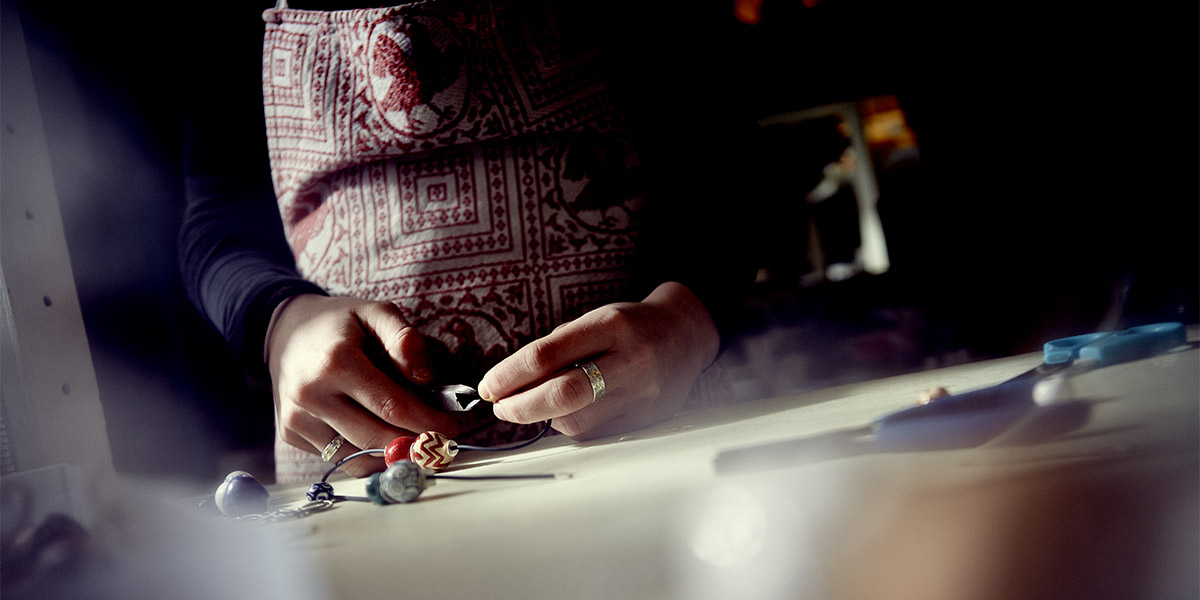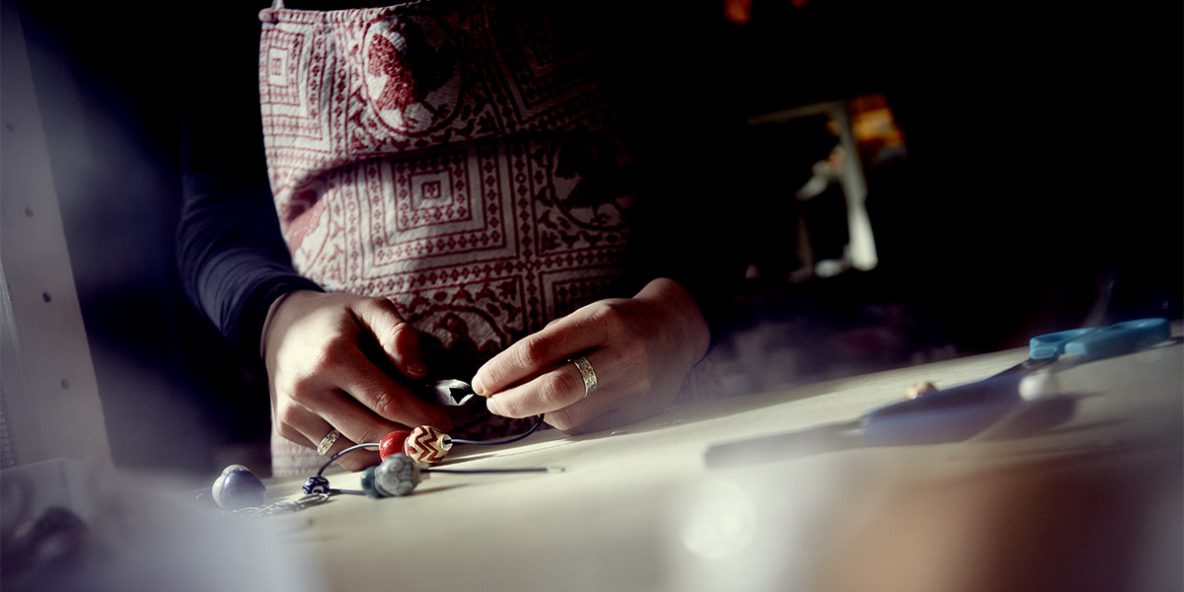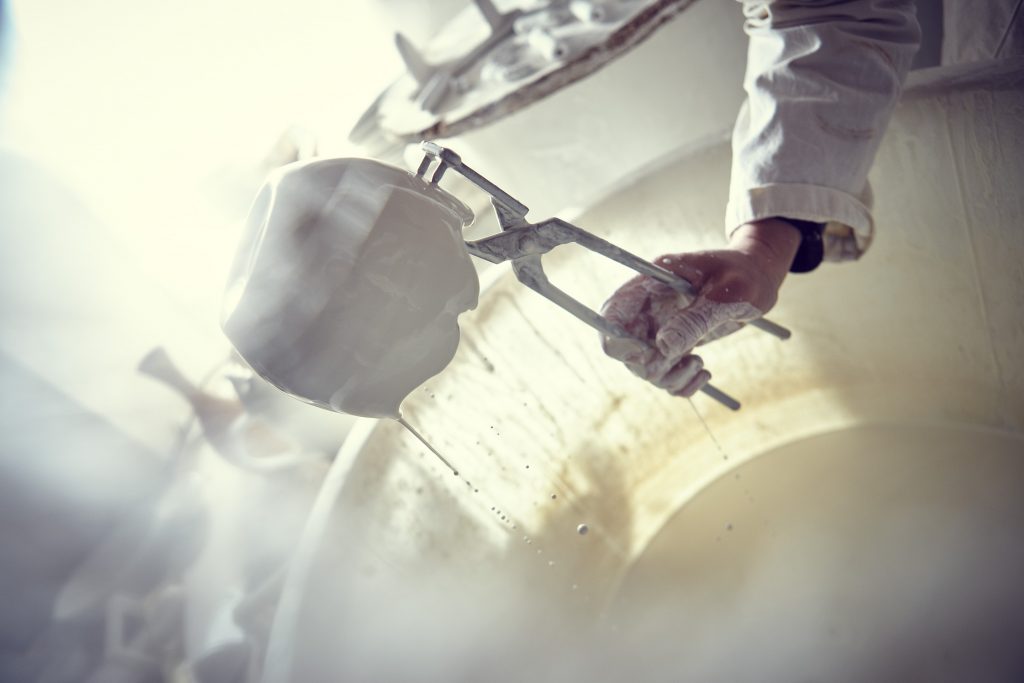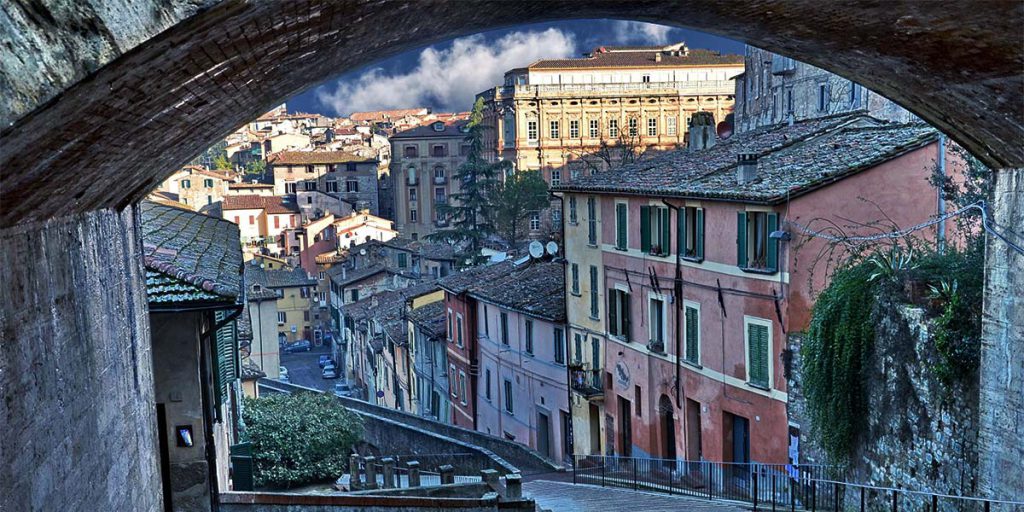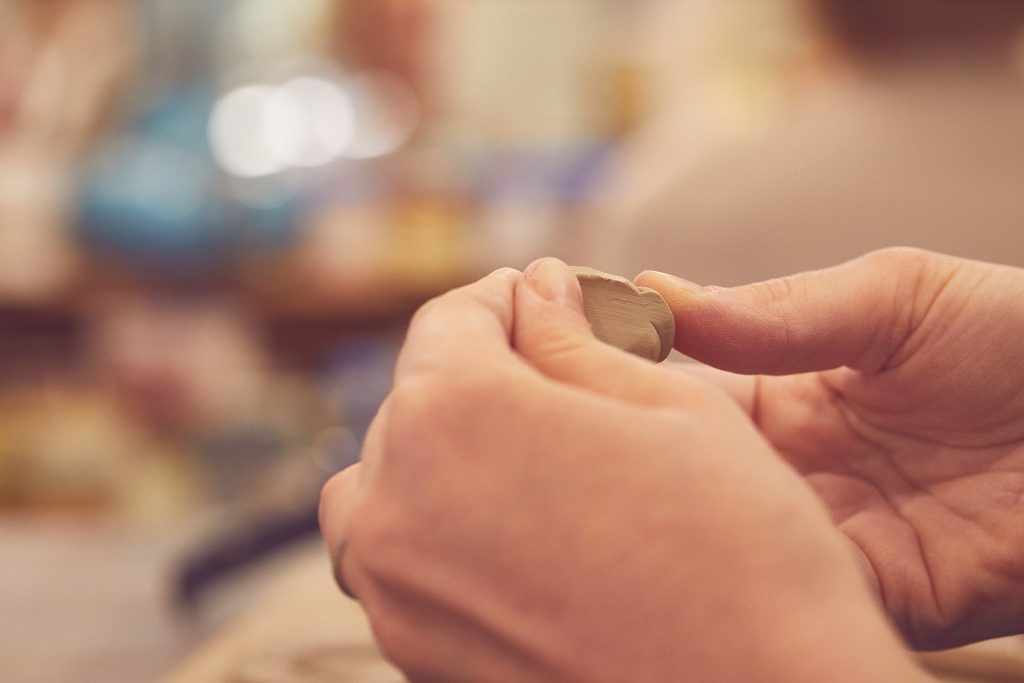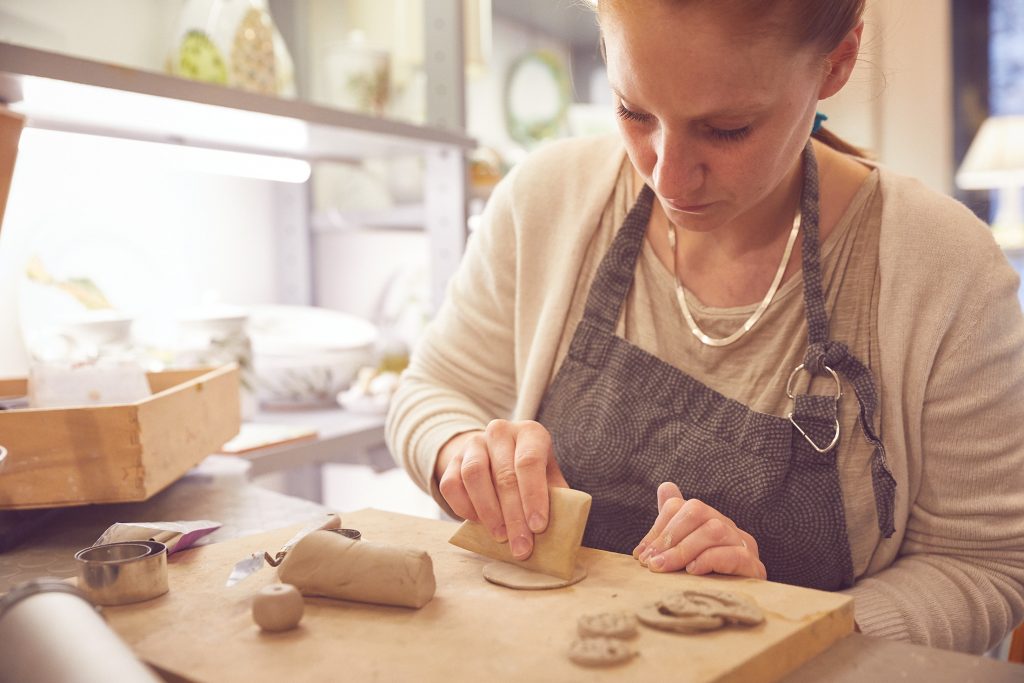The Artisan Workshop Materia Ceramica
Clay Working: Lucignolo and Casting
Lucignolo is one of the methods of manual clay processing: the clay mixture is worked completely by hand, creating the desired shape.
It is the oldest method for molding earthenware, especially for everyday objects.
Materia Ceramica workshop uses this method to produce jewelry, key chains, bow ties and accessories of all kinds, including custom made-to-order. The workshop also performs clay casting in ad-hoc and customizable plaster molds. This type of processing allows for the creation of special and entirely new shapes in traditional ceramic work.
From terracotta to biscuit
One of the highlights of ceramics working process is the first firing of the clay form which allows to obtain the terracotta piece – defined as a biscuit.
The creation of a shape presupposes previous drawing and design work which is followed by the actual shaping of the object.
This object, carefully set to dry until it reaches leather hardness, will be fired in special kilns at a temperature of 960-1070°C to obtainsoft earthenwares“, which are at the heart of traditional Umbrian workmanship; firing can also be carried out at higher temperatures, for the so-called “strong earthenwares“. In any case, it will transform the earthen mixture, extremely ductile by nature, into ceramics (from ancient Greek κέραμος, ‘kéramos,’ meaning “clay”). Due to their highly articulated physical composition, ceramic materials can possess very different characteristics: different degrees of hardness; different degrees of heat resistance; different melting points.
This is why they are used in a wide variety of industrial sectors, medicine and scientific research.
Glaze and Majolica
The tradition of ceramics in Umbria dates back to ancient times. From the Etruscans to the Romans to the Greeks, the Italic peninsula is dotted with ancient stories that speak of clay, colors, hands, and different firings applied to not only obtain everyday objects but also to create high-level artistic traditions. Umbria specifically the areas of Deruta, Gualdo Tadino and Gubbio, due to the nature of the territory and the natural production of clay as a raw material developed the craftsmanship of majolicaThe term majolica – derived from the name of the Island of Majorcaa medieval center of the trade of such products- defines the terracotta object covered with a bath of glaze stanniferous, which creates the white base on which the decoration brushed on.
